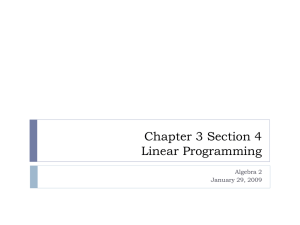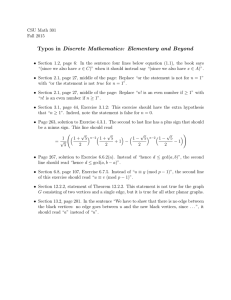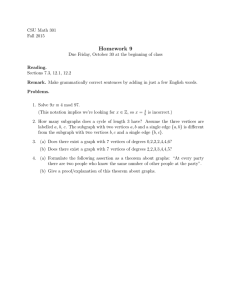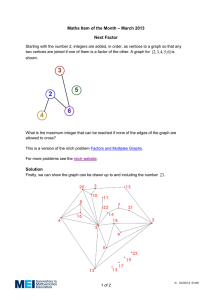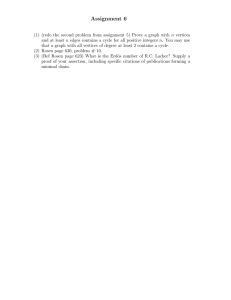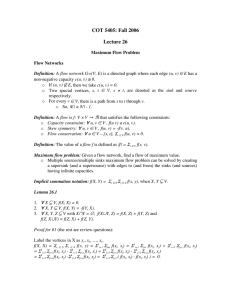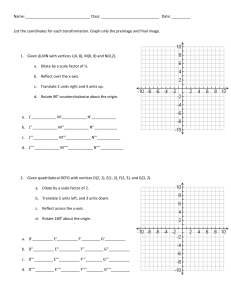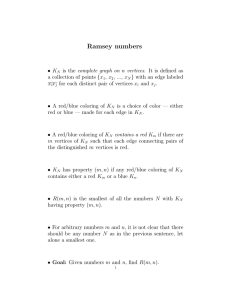Linear Programming Section 3-5
advertisement
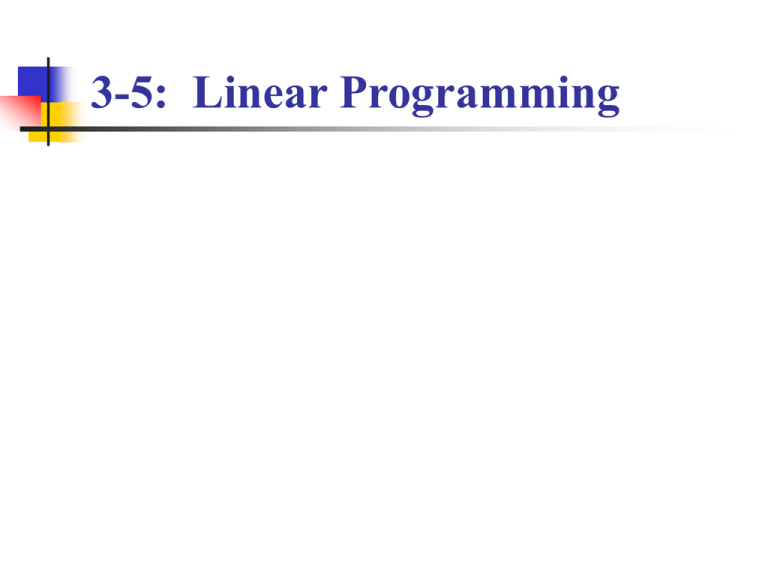
3-5: Linear Programming Linear Programming Businesses use linear programming to find out how to maximize profit or minimize costs. Most have constraints on what they can use or buy. Find the minimum and maximum value of the function f(x, y) = 3x - 2y. We are given the constraints: y≥2 1 ≤ x ≤5 y≤x+3 Linear Programming Find the minimum and maximum values by graphing the inequalities and finding the vertices of the polygon formed. Substitute the vertices into the function and find the largest and smallest values. 1 ≤ x ≤5 8 7 6 5 4 3 y≤x+3 y≥2 2 1 1 2 3 4 5 Linear Programming The vertices of the quadrilateral formed are: (1, 2) (1, 4) (5, 2) (5, 8) Plug these points into the function f(x, y) = 3x - 2y Linear Programming f(x, y) = 3x - 2y f(1, 2) = 3(1) - 2(2) = 3 - 4 = -1 f(1, 4) = 3(1) - 2(4) = 3 - 8 = -5 f(5, 2) = 3(5) - 2(2) = 15 - 4 = 11 f(5, 8) = 3(5) - 2(8) = 15 - 16 = -1 Linear Programming f(1, 4) = -5 minimum f(5, 2) = 11 maximum Find the minimum and maximum value of the function f(x, y) = 4x + 3y We are given the constraints: y ≥ -x + 2 1 y ≤ x+2 4 y ≥ 2x -5 y ≥ 2x -5 6 5 y 4 y ≥ -x + 2 3 2 1 1 2 3 4 5 1 x2 4 Vertices f(x, y) = 4x + 3y f(0, 2) = 4(0) + 3(2) = 6 f(4, 3) = 4(4) + 3(3) = 25 7 1 1 7 f( , - ) = 4( ) + 3(- ) = 3 3 3 3 28 3 -1 = 25 3 Linear Programming f(0, 2) = 6 minimum f(4, 3) = 25 maximum

